Garden Edging Ideas with Pavers: Transform Your Outdoor Space
Creating an attractive garden doesn’t have to be expensive or complicated. By using pavers, you can add a tidy and stylish edge to your garden beds. Whether you’re aiming for a classic look or something more modern, pavers offer a versatile solution that can transform any garden space.
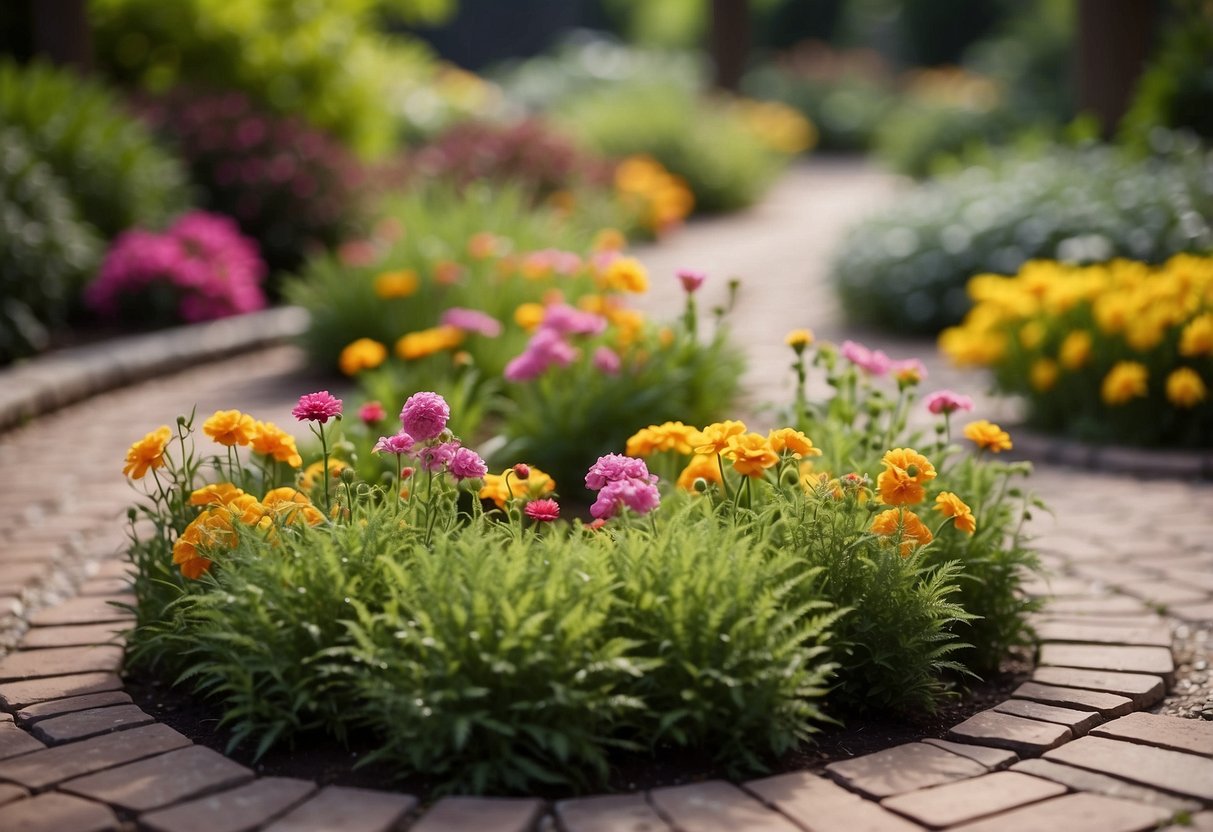
You’ll find that pavers come in a range of materials and styles, making it easy to match them with your existing landscape. From bricks to stones, the options are vast and can suit various design preferences. With a little creativity, you can use pavers to not only enhance the appearance of your garden but also improve its functionality.
1) Brick Border

Using bricks for garden edging adds a classic look to your garden. First, gather your bricks and decide on the shape of your border. Make sure you have enough bricks to complete the entire edge.
Next, dig a trench where you want the bricks to go. Add a base layer of sand and cement. This helps keep the bricks in place. Finally, place the bricks in the trench, ensuring they are level as you go. This method creates a sturdy and attractive border for your garden. For more detailed steps, you can check out how to lay brick garden edging.
2) Cobblestone Edging

Cobblestone edging adds a classic and timeless look to your garden. It’s perfect if you want something sturdy and elegant.
You can use cobblestones to create neat borders around flower beds or pathways. They’re durable and weather well over time.
Cobblestone edges also help prevent soil from spilling onto walkways, keeping your garden tidy. For more detailed ideas, check out this great article on creating a beautiful garden with stone edging.
3) Concrete Paver Mow Strip
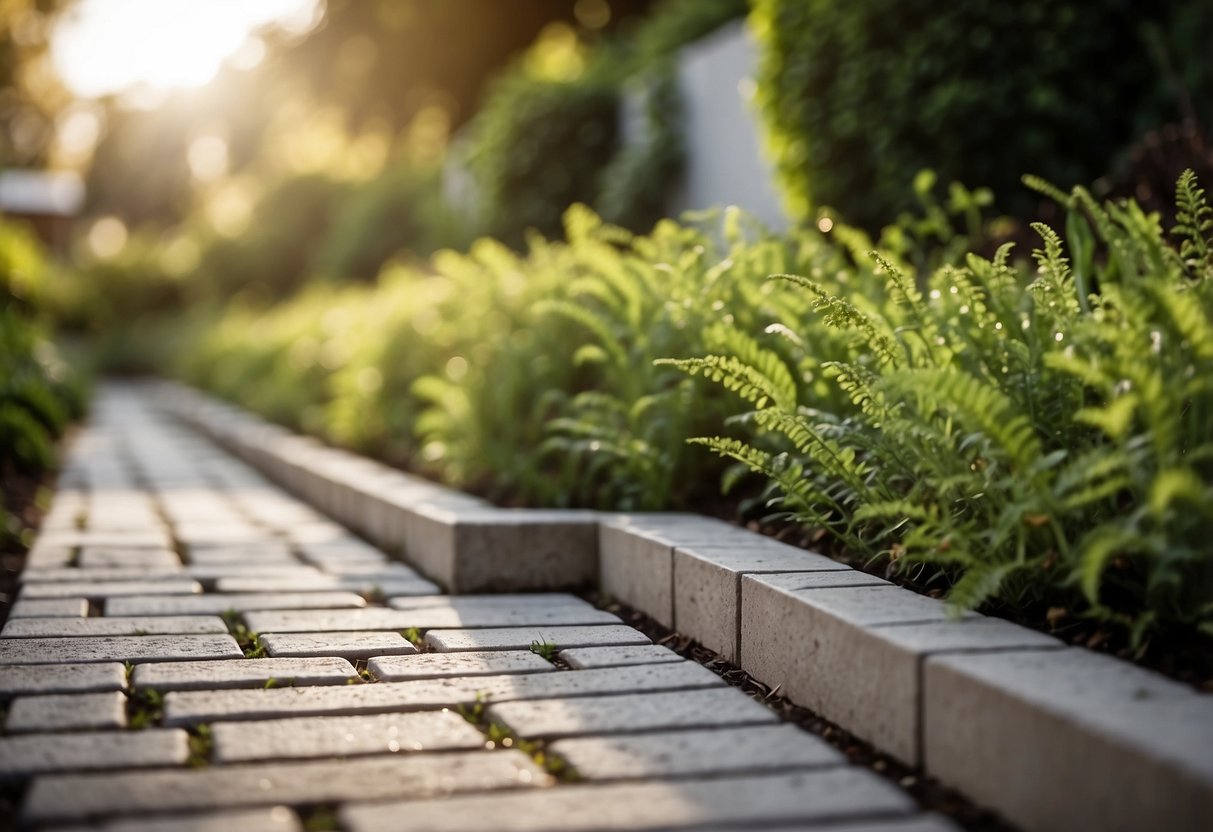
Concrete paver mow strips are a great way to keep your lawn looking neat. They provide a stable edge that separates grass from garden beds.
You can dig a 4-inch deep trench using a flat spade. Line the trench with landscape fabric and add a layer of sand for stability.
Lay the concrete pavers side by side and tap them into place. This not only creates a clean edge but makes mowing easier.
4) Flagstone Pathway

A flagstone pathway can add a touch of elegance to your garden. These flat stones come in various colors and shapes, allowing you to create a natural-looking path.
To start, lay the stones in your desired pattern. Make sure to position them tightly together to reduce gaps.
Use a shovel to outline where each stone will go. This helps keep the layout organized and ensures the stones stay in place. For inspiration, explore these walkway ideas which include beautiful examples of flagstone paths.
5) Recycled Glass Pavers
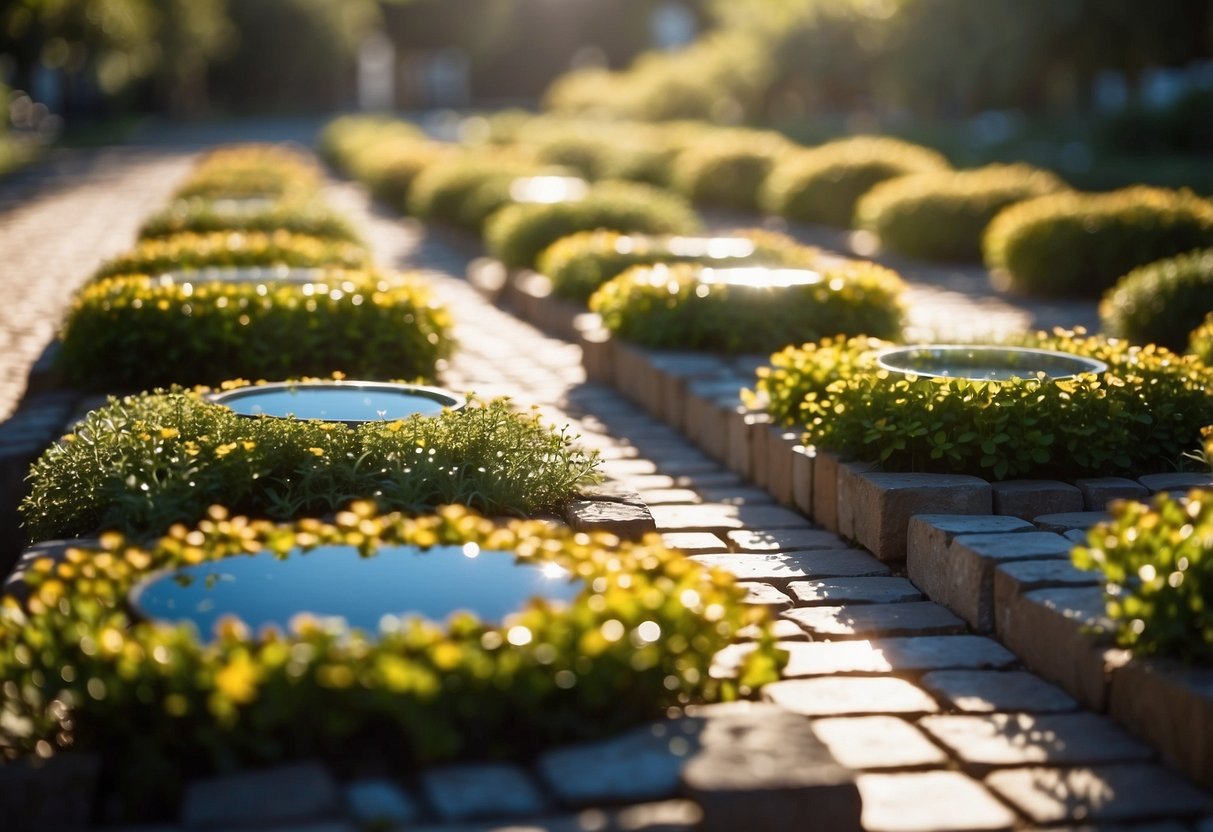
Recycled glass pavers are a creative and eco-friendly option for garden edging.
These pavers can add a unique and colorful touch to your yard. You can find them in various shades and styles to match your garden theme.
By using recycled glass, you help reduce waste and make a positive environmental impact. Consider pairing them with plants to add a vibrant pop.
6) Granite Curb Stones
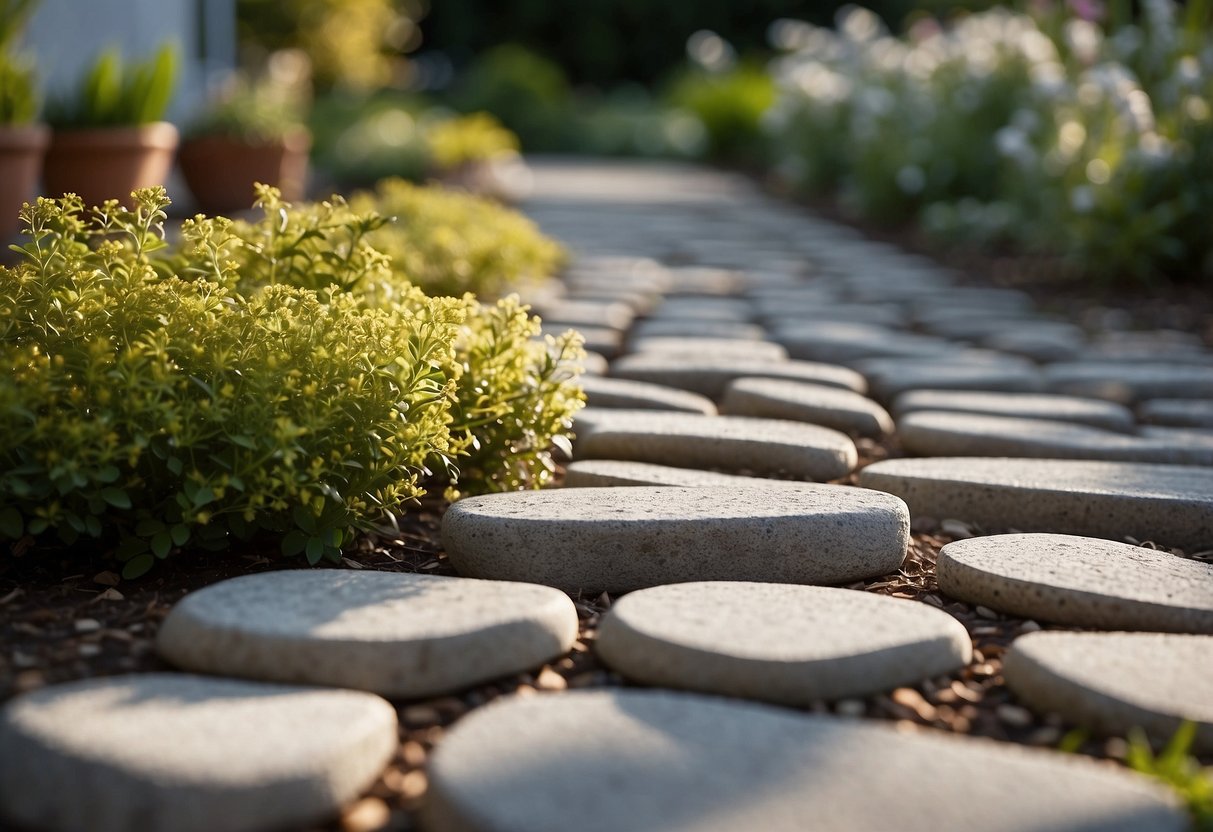
Granite curb stones can create a clean and elegant edge for your garden.
These stones are highly durable and can withstand varying weather conditions.
Granite curb stones come in different colors, allowing you to match them with your garden’s design.
Installing granite curb stones involves digging a small trench and placing the stones firmly.
You can find more ideas about stone edging and curb stones for exterior landscaping.
7) Terracotta Edging
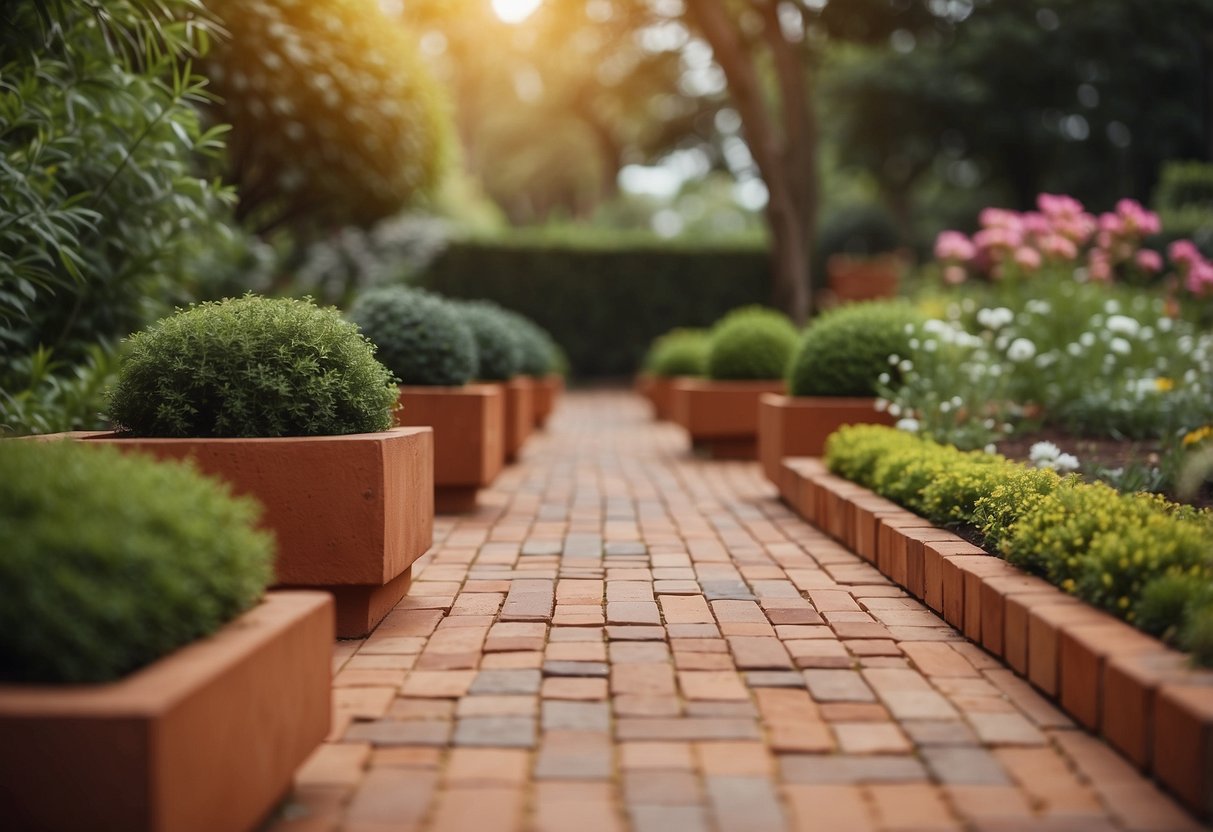
Terracotta edging adds a warm, rustic charm to your garden. It’s porous, letting water and air pass through easily. This material ages beautifully, developing a weathered look over time.
You can find ornate patterned antique terracotta edging at salvage yards or purchase it new. Both options will instantly enhance your garden’s appeal.
Installation is simple. Just loosen the soil, lay the tile with a wooden block on top, and tap it gently with a mallet. This easy process ensures your garden looks neat and well-defined.
8) Slate Screed

Slate screed is a fantastic option for garden edging. It has a sleek and modern look that fits well in contemporary gardens.
Using slate is very practical. It’s durable and can withstand harsh weather. This makes it a long-lasting choice for your garden.
Moreover, slate screed is great for creating clean lines. Its dark color contrasts beautifully with greenery, highlighting your plants.
9) Bluestone Border
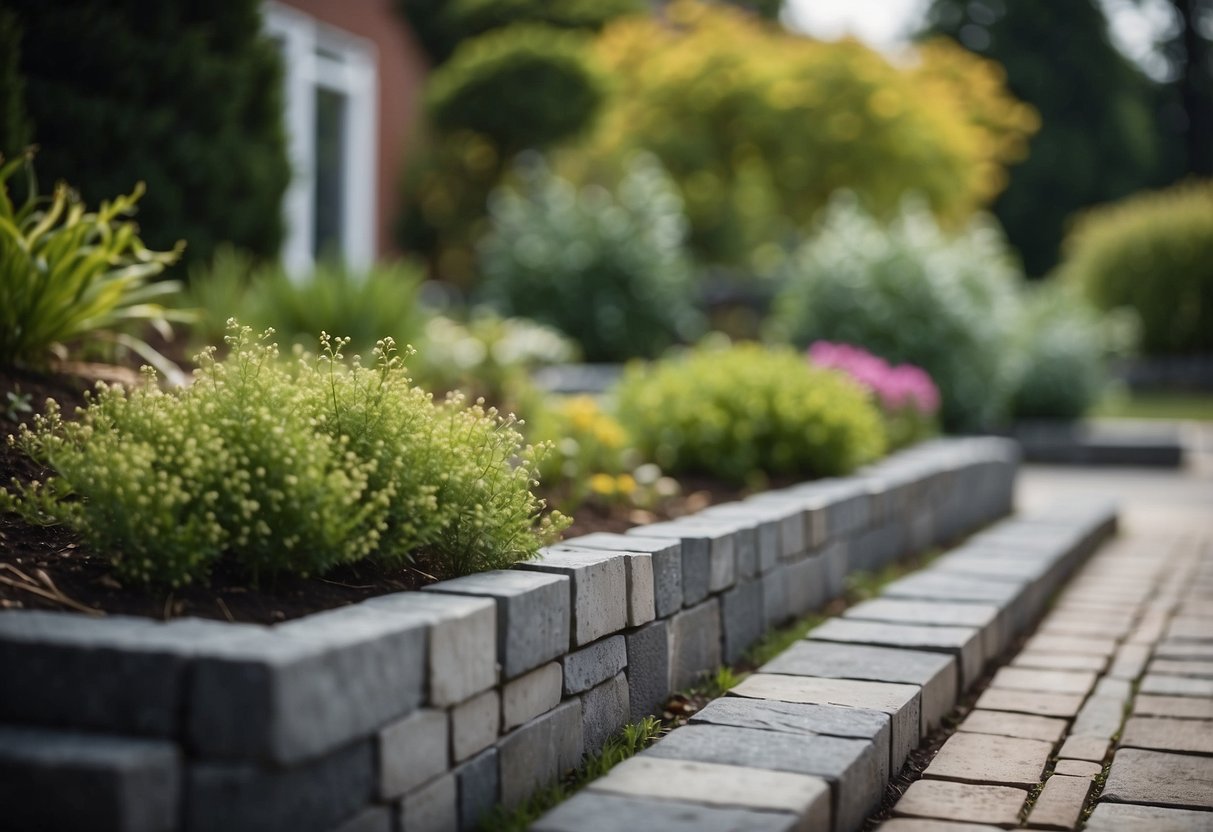
Bluestone borders are a great choice for your garden. They offer a clean and polished look. The bluish hues add a touch of elegance.
Bluestone is known for its durability. It can withstand various weather conditions. This makes it a great option for outdoor use.
You can use bluestone to edge your paths or garden beds. It helps to keep everything in place and looks neat. For more ideas, check out Bluestone Borders and Edging Techniques.
10) Sandstone Edging
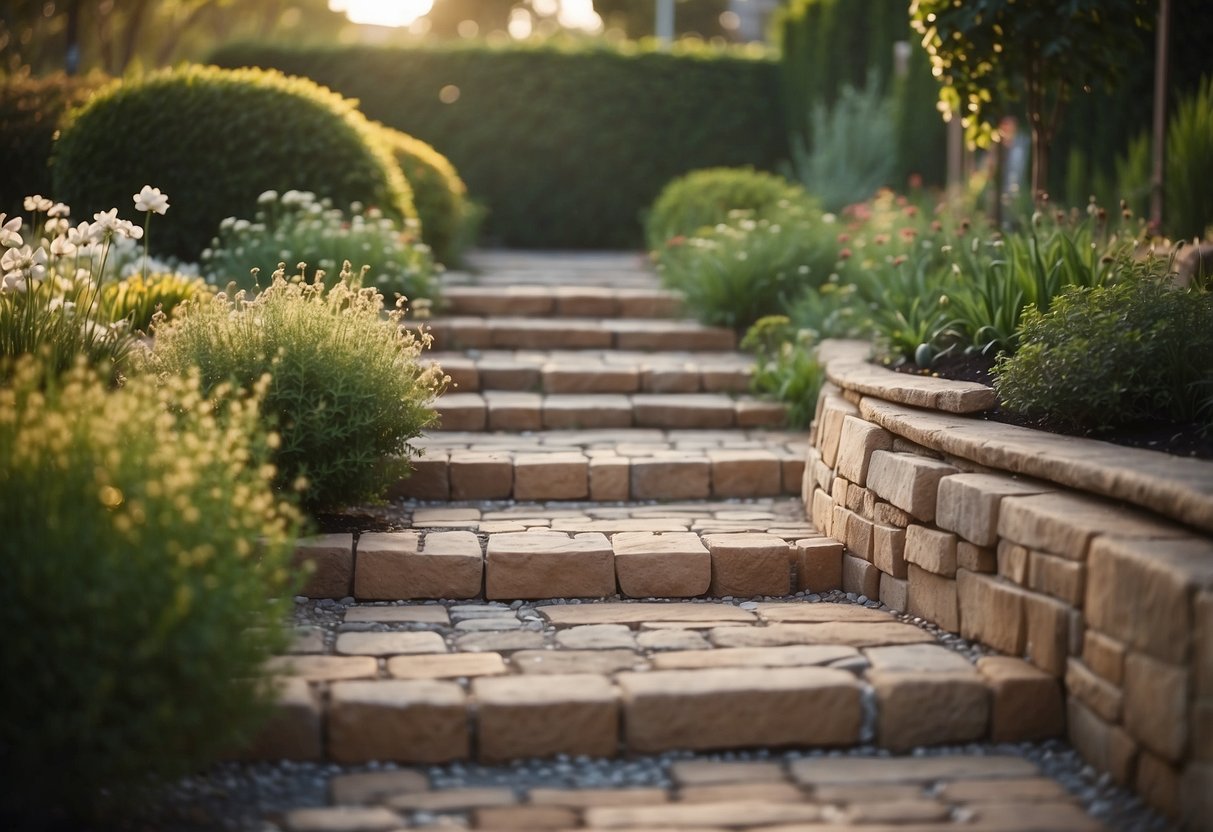
Sandstone is a natural choice for garden edging. Its warm colors and textures blend well with outdoor settings.
You can lay sandstone pavers in a variety of patterns, from simple straight lines to more intricate designs.
Sandstone is durable and can withstand different weather conditions, making it a great option for your garden borders.
Using sandstone pavers can add a touch of elegance and rustic charm to your backyard. Whether you have a modern or traditional garden, sandstone edges can enhance the overall look.
For more ideas on paver garden edging, visit Stonedepot.
Benefits of Garden Edging with Pavers

Garden edging with pavers offers a range of advantages, including enhancing the durability of your garden layout and boosting its visual appeal.
Durability and Longevity
Using pavers for garden edging ensures a long-lasting boundary for your garden. Pavers are made from materials like brick, concrete, or stone, all known for their strength. These materials can withstand weather extremes, from heavy rain to harsh sun, without deteriorating.
Maintenance is minimal with pavers. Unlike wood or plastic edges, which might require regular upkeep or replacement, pavers retain their structure and color for years. You’re less likely to encounter issues like rot, warping, or fading.
Additionally, pavers provide a stable edge that helps to prevent soil from spilling over and keeps your garden beds neatly contained. This can be especially beneficial if you have a garden on a slope or in a high-traffic area.
Aesthetic Appeal
Pavers come in various shapes, sizes, and colors, allowing you to customize the look of your garden. Whether you prefer a modern, sleek design with concrete pavers, or a more rustic feel with cobblestones, pavers can match your garden’s theme.
Installing paver edging can enhance the overall look of your garden by providing clean lines and defined borders. This helps to create a well-organized and visually appealing space that can be a pleasure to spend time in.
You can also use different patterns and layouts to add an extra layer of interest. For example, laying pavers in a herringbone or basket weave pattern can give your garden a unique look that stands out. This flexibility in design ensures that your garden will reflect your personal style and creativity.
Consider mixing materials, like pairing brick pavers with stone, to achieve a distinctive edge that complements your garden’s natural beauty.
Choosing the Right Pavers for Your Garden

When selecting pavers, consider the materials available along with the colors and textures that best match your garden’s style. This ensures your garden is both functional and visually appealing.
Materials and Styles
Picking the right material is key for your garden’s look and durability. Concrete pavers are known for their sleek, modern feel, and they come in many shapes and sizes. They’re great if you want clean lines in your garden.
Brick pavers are both versatile and durable. They bring a touch of sophistication and have a timeless appeal. Check out some more info on brick paver edging for ideas.
Stone pavers offer a natural, rustic charm. They often have irregular shapes and colors, making them perfect for a more organic look. See more on stone paver ideas.
Color and Texture Considerations
The color and texture of your pavers can greatly influence your garden’s appeal. Neutral colors like gray and beige blend seamlessly with most landscapes, while bold colors like red or black can create striking contrasts.
Textures also vary widely. Smooth textures offer a clean, polished look and are easier to walk on. Rough textures provide a more natural appearance and can help with traction.
Think about how light affects the pavers throughout the day. For instance, light-colored pavers can make a space look larger and brighter, whereas darker pavers can add depth and richness.
By combining the right materials, colors, and textures, you can create a garden that’s both functional and beautiful.







